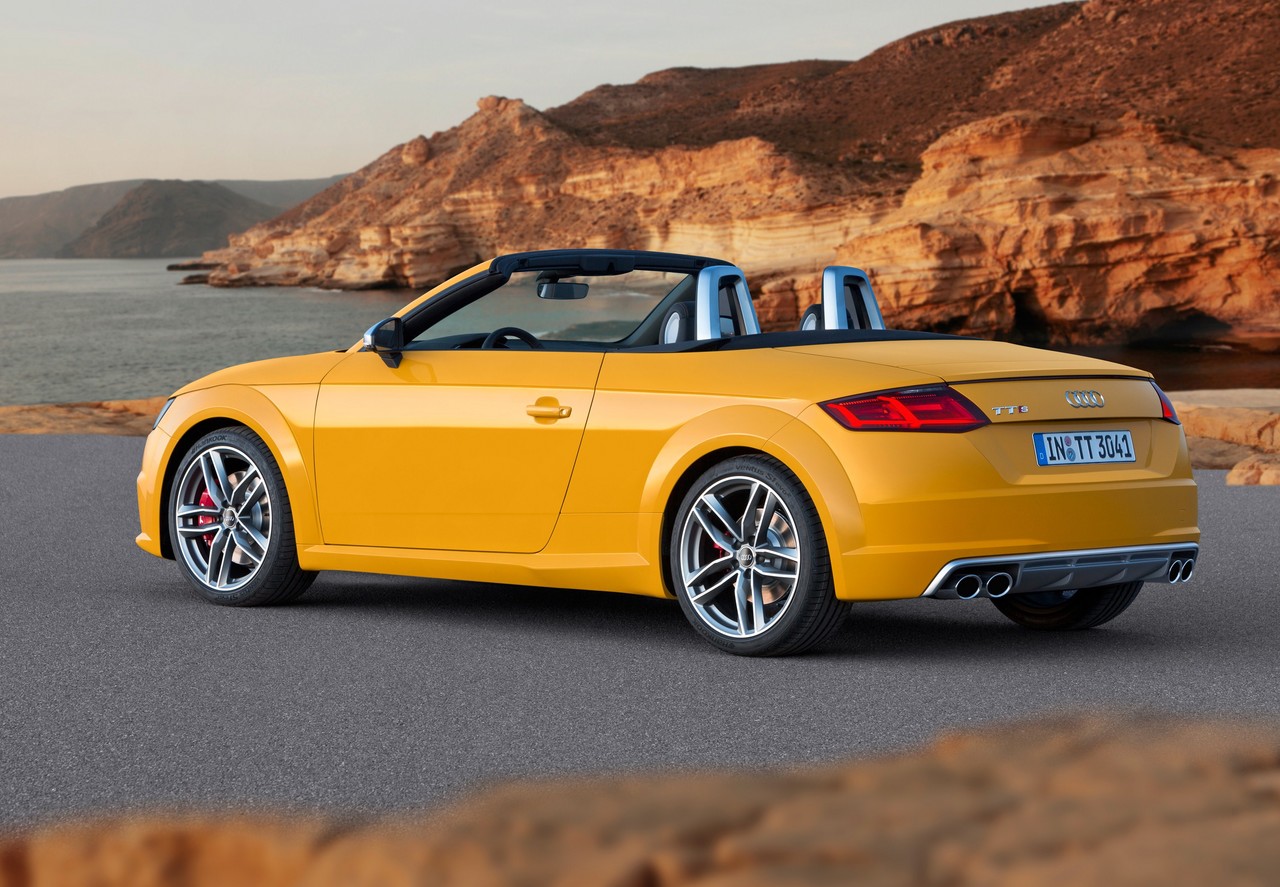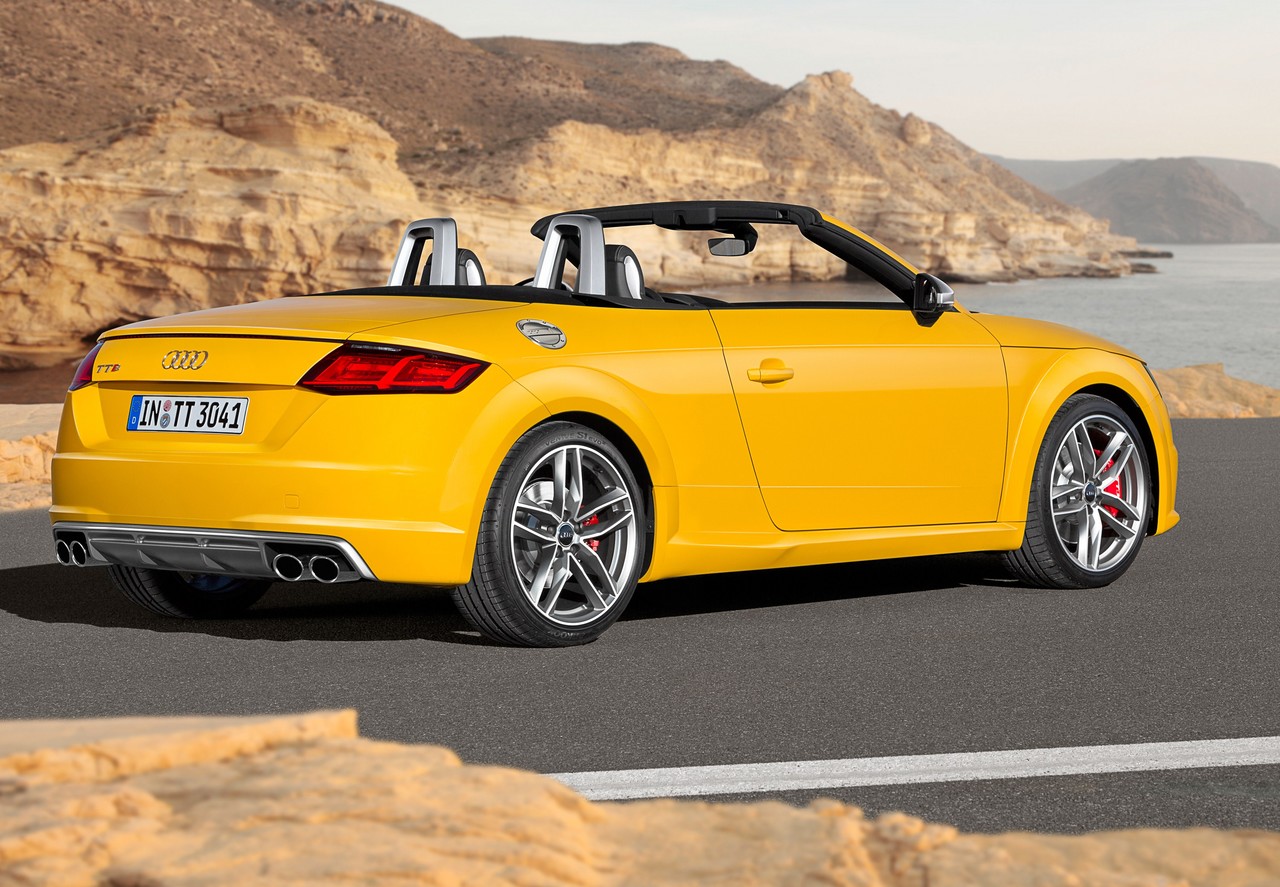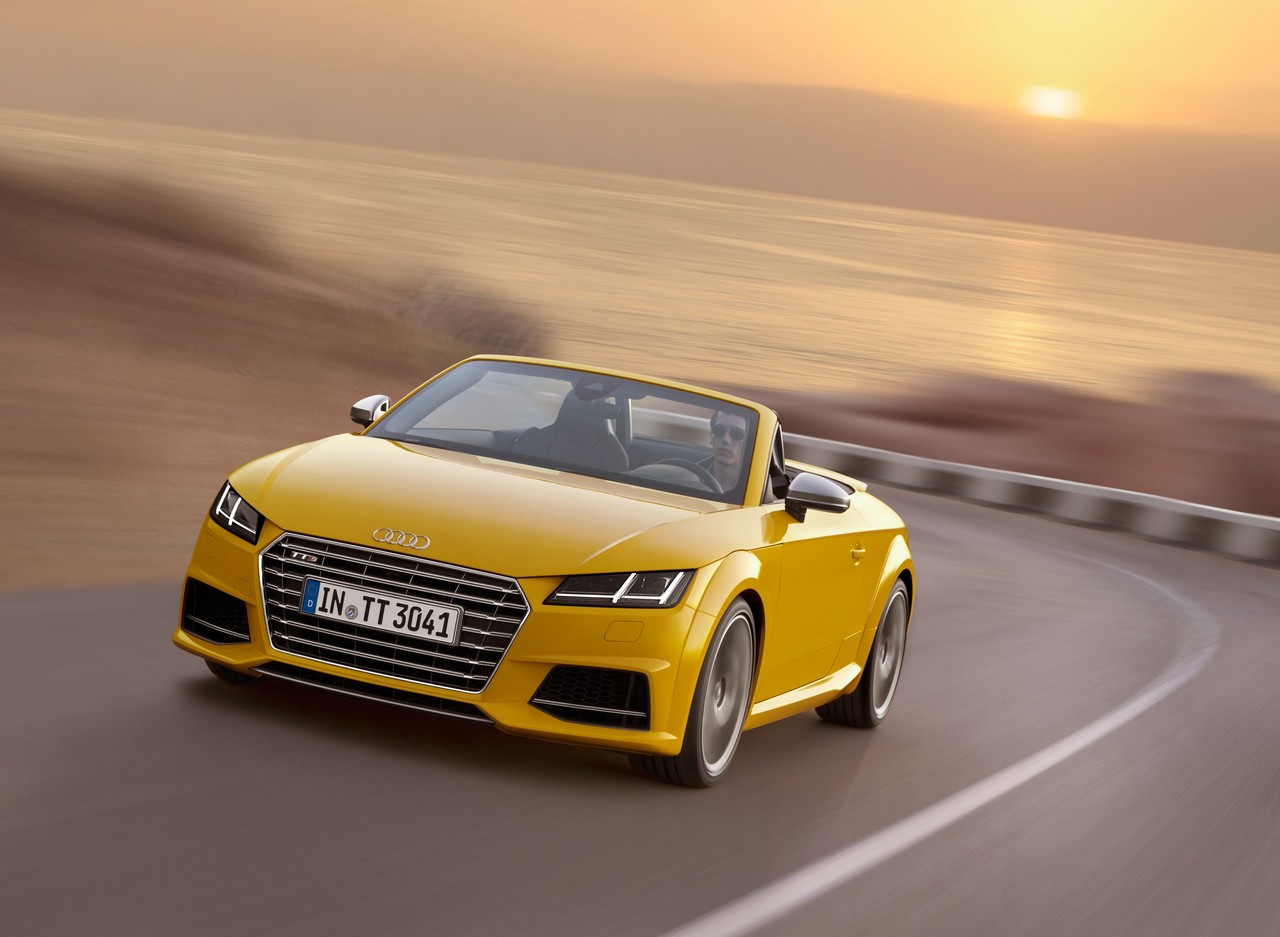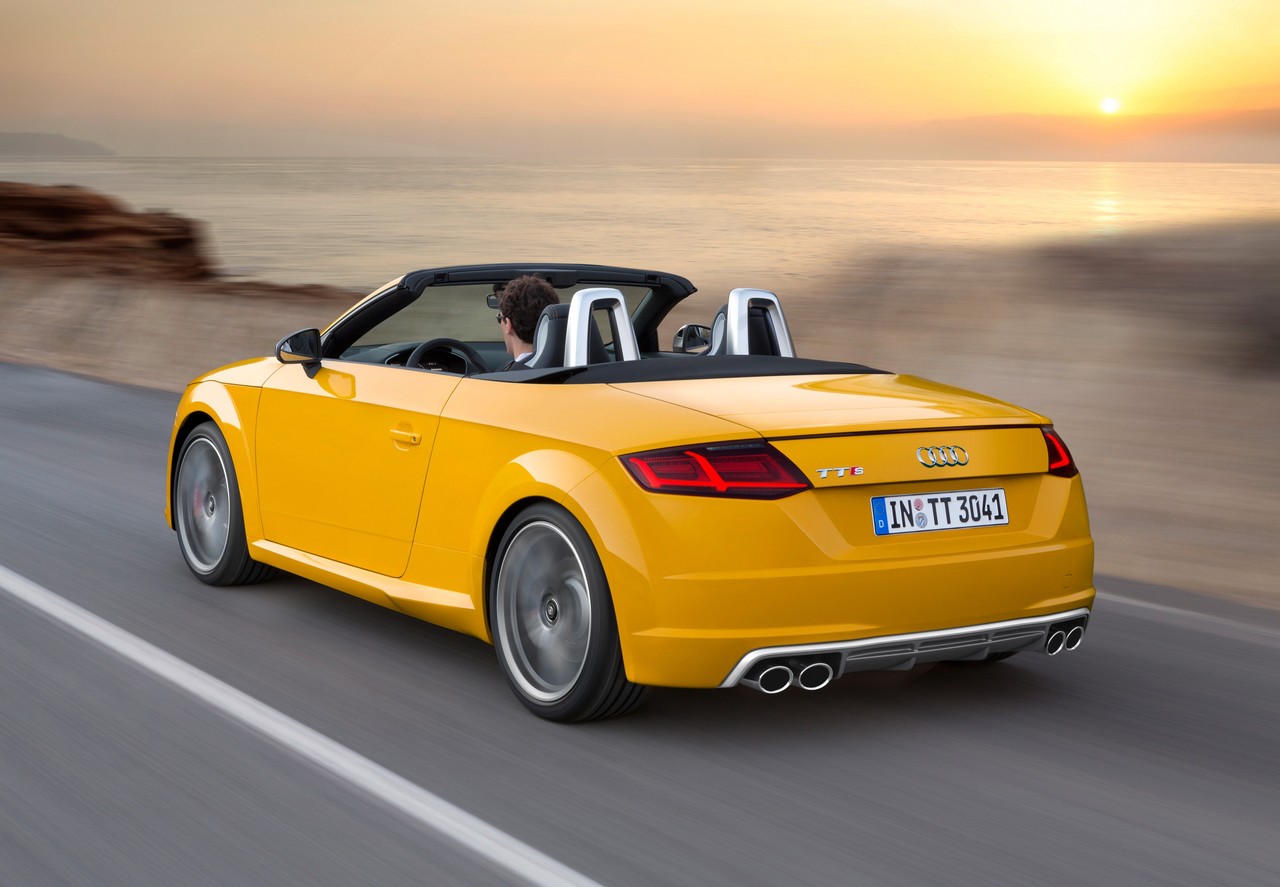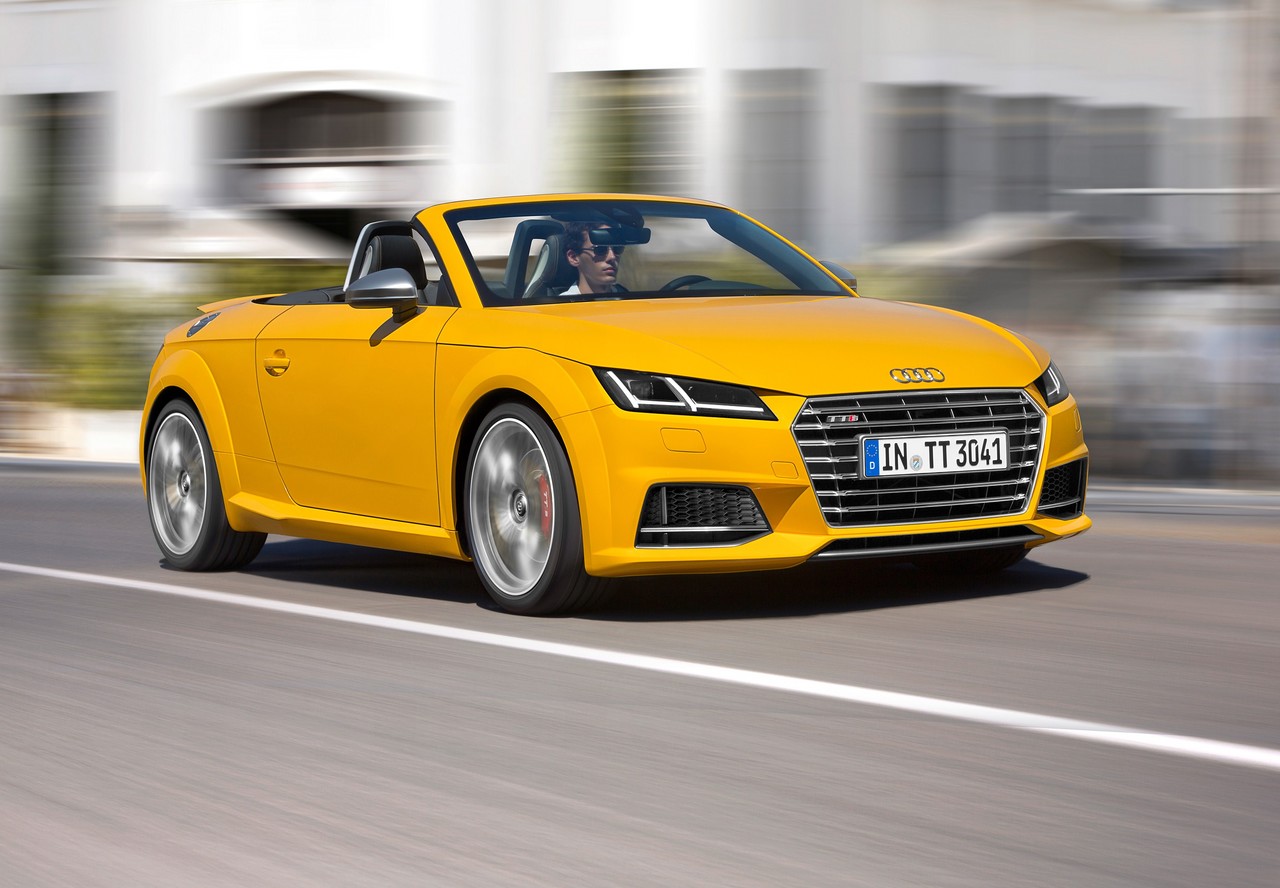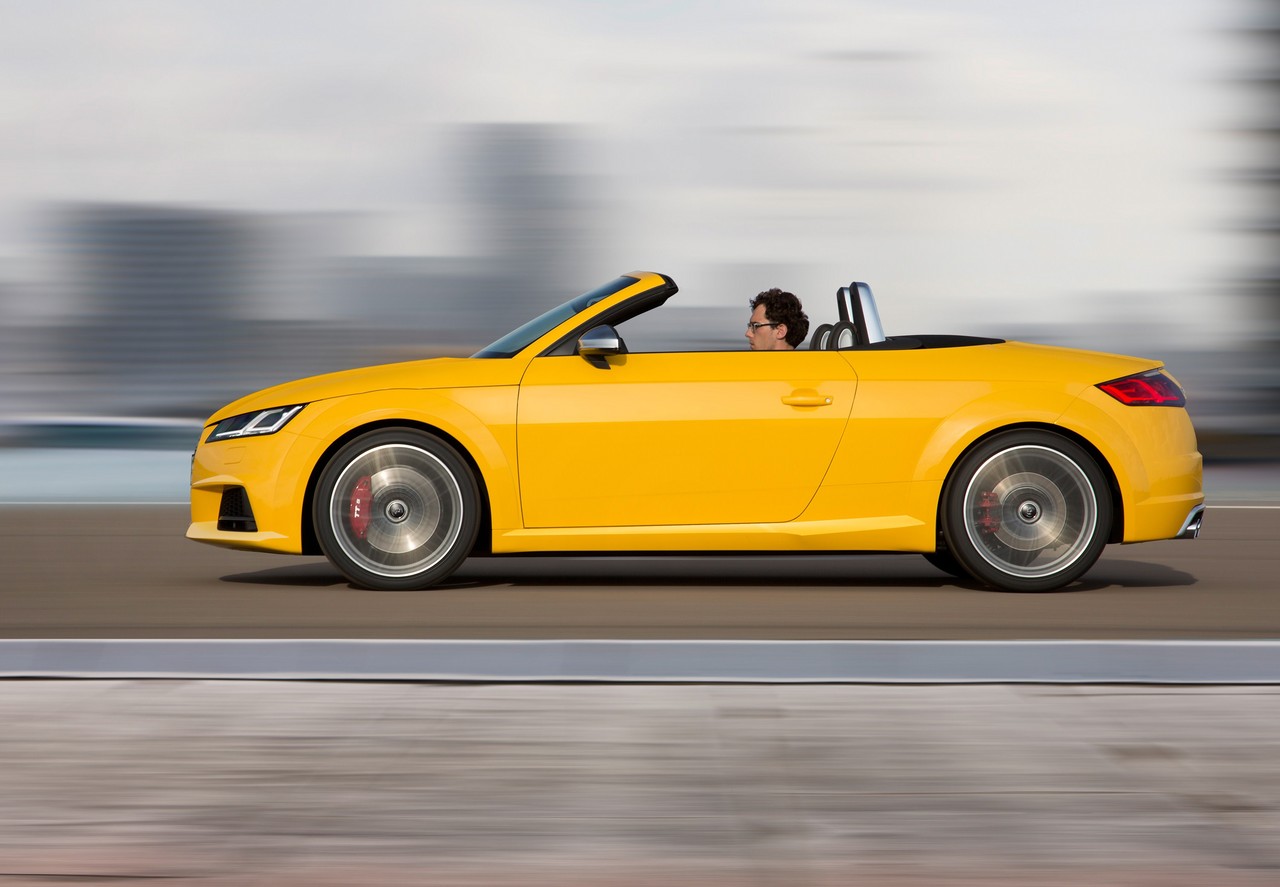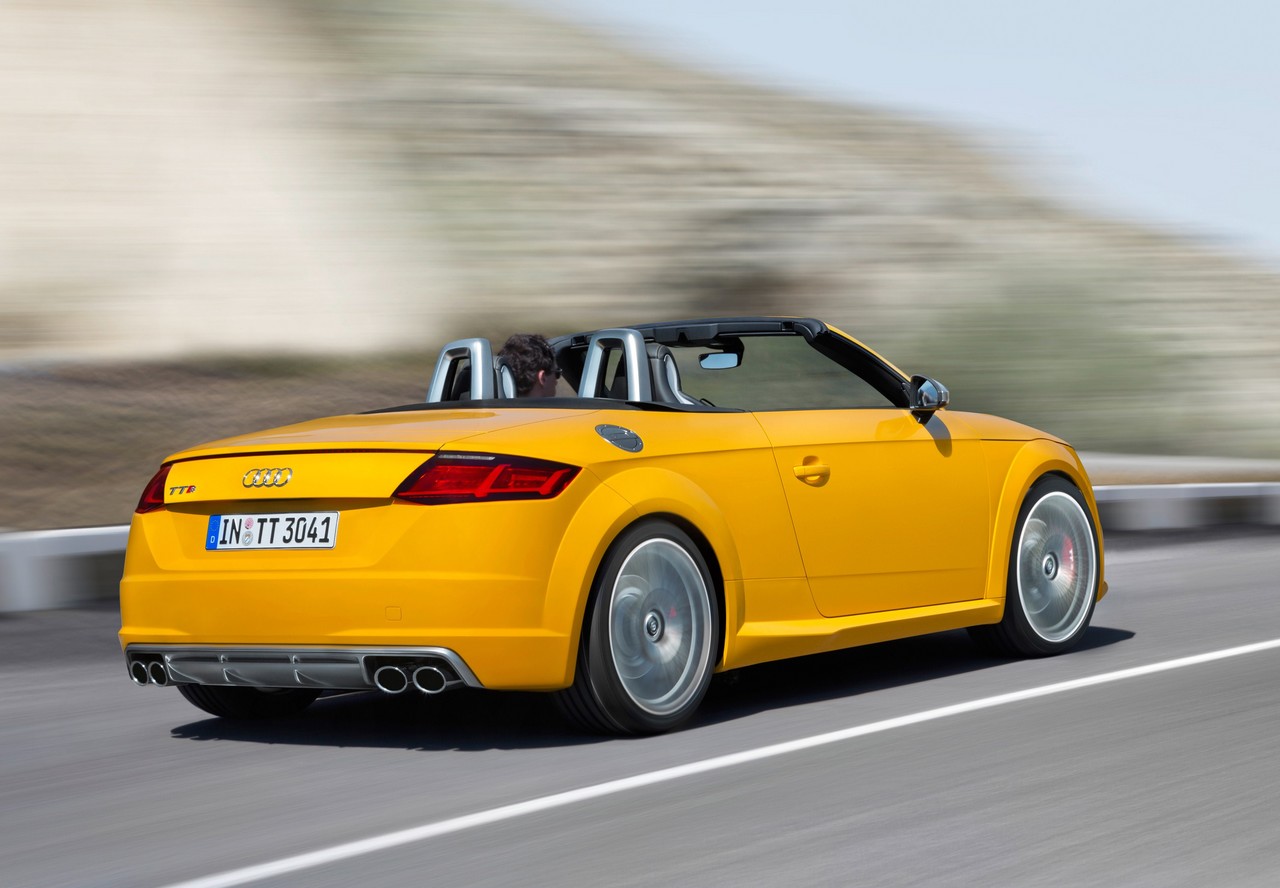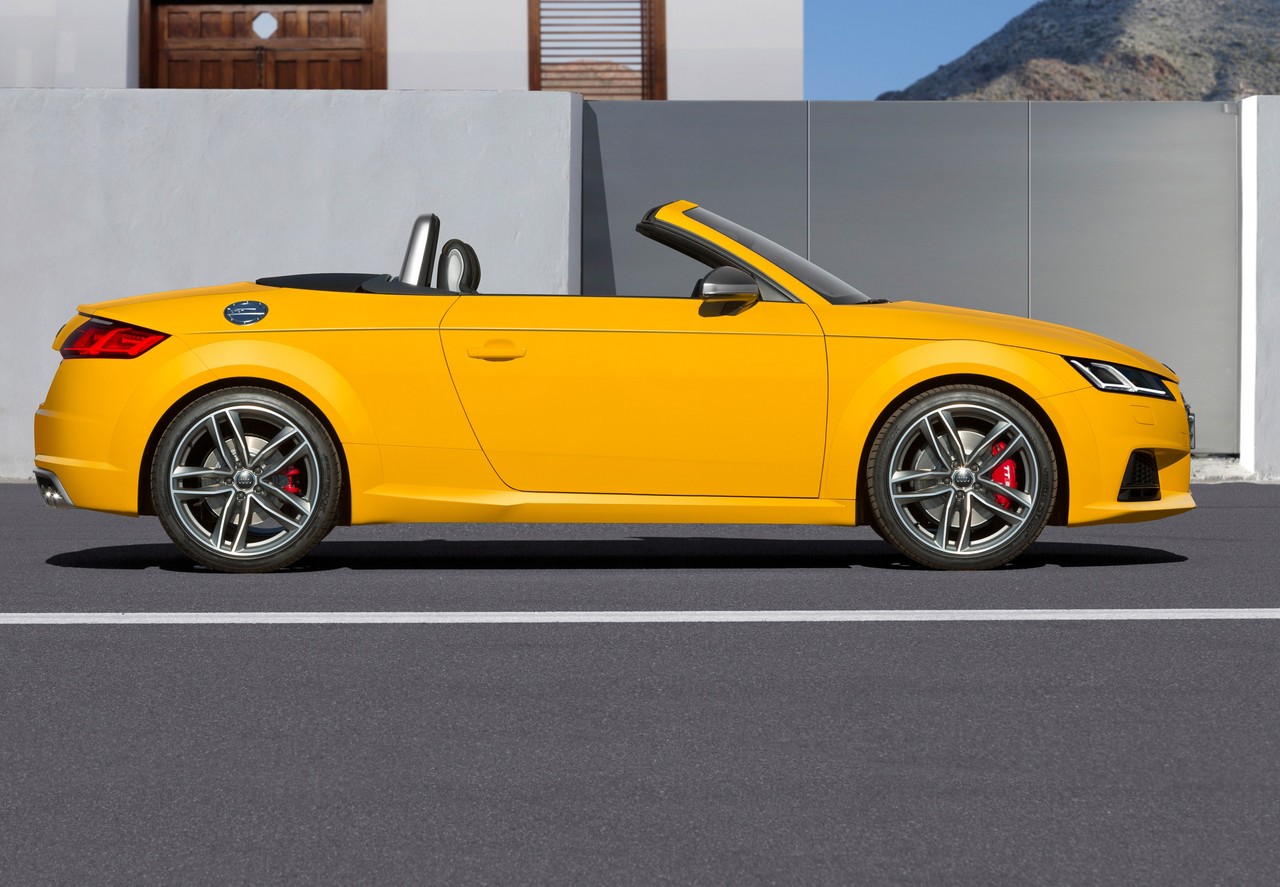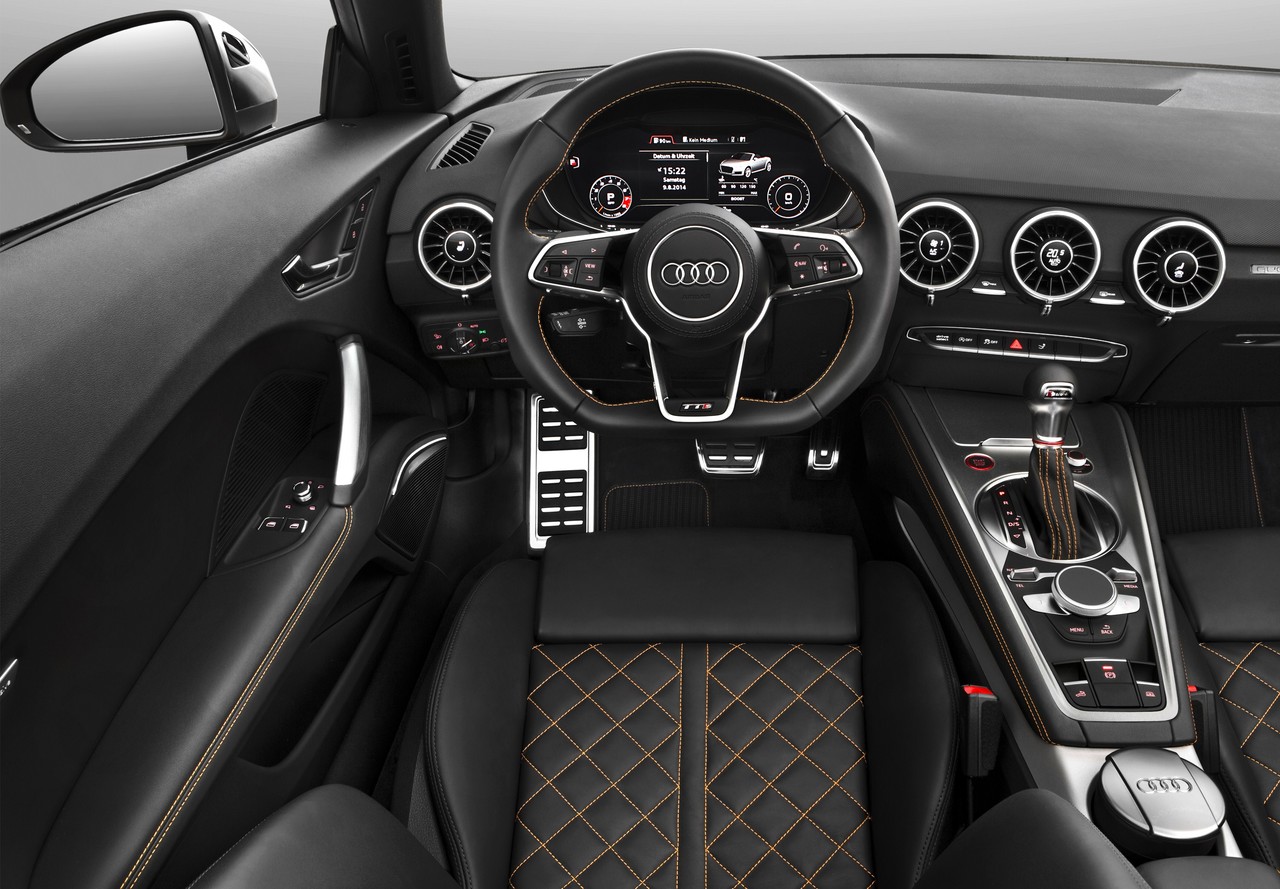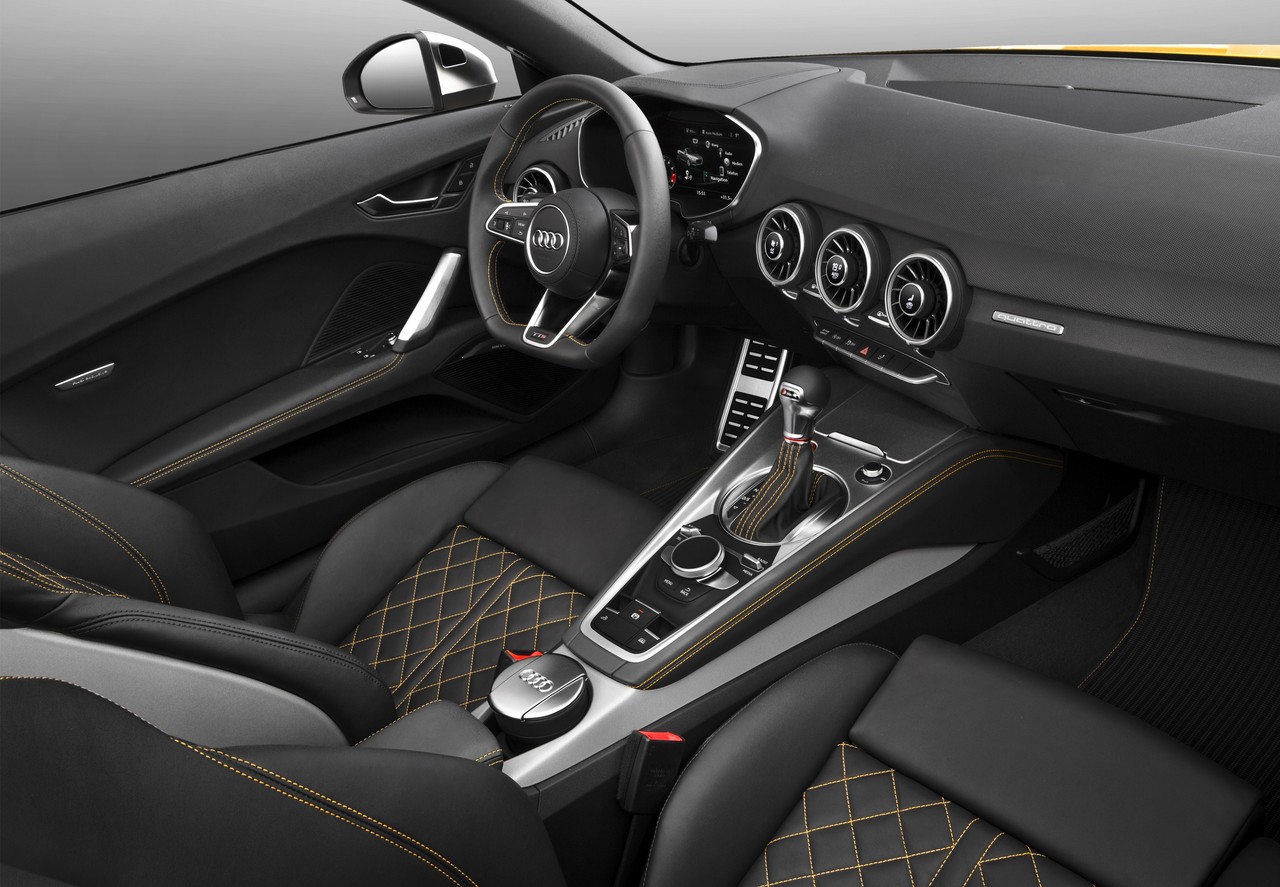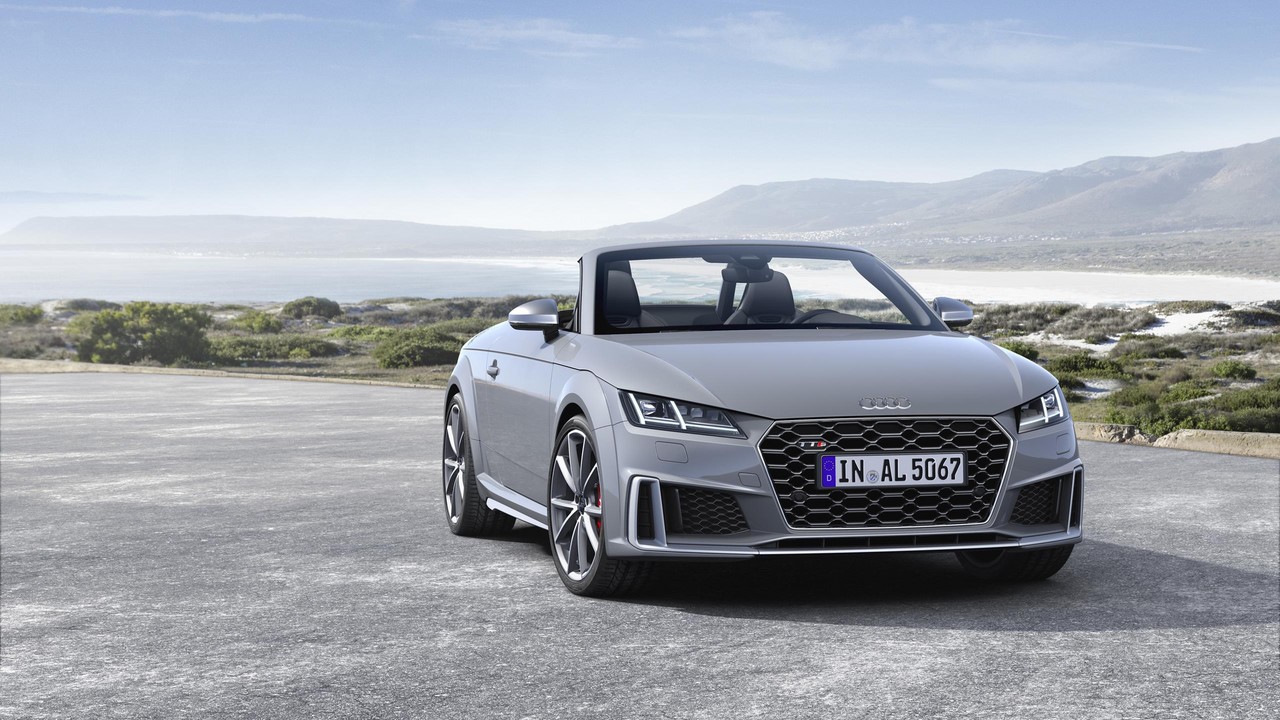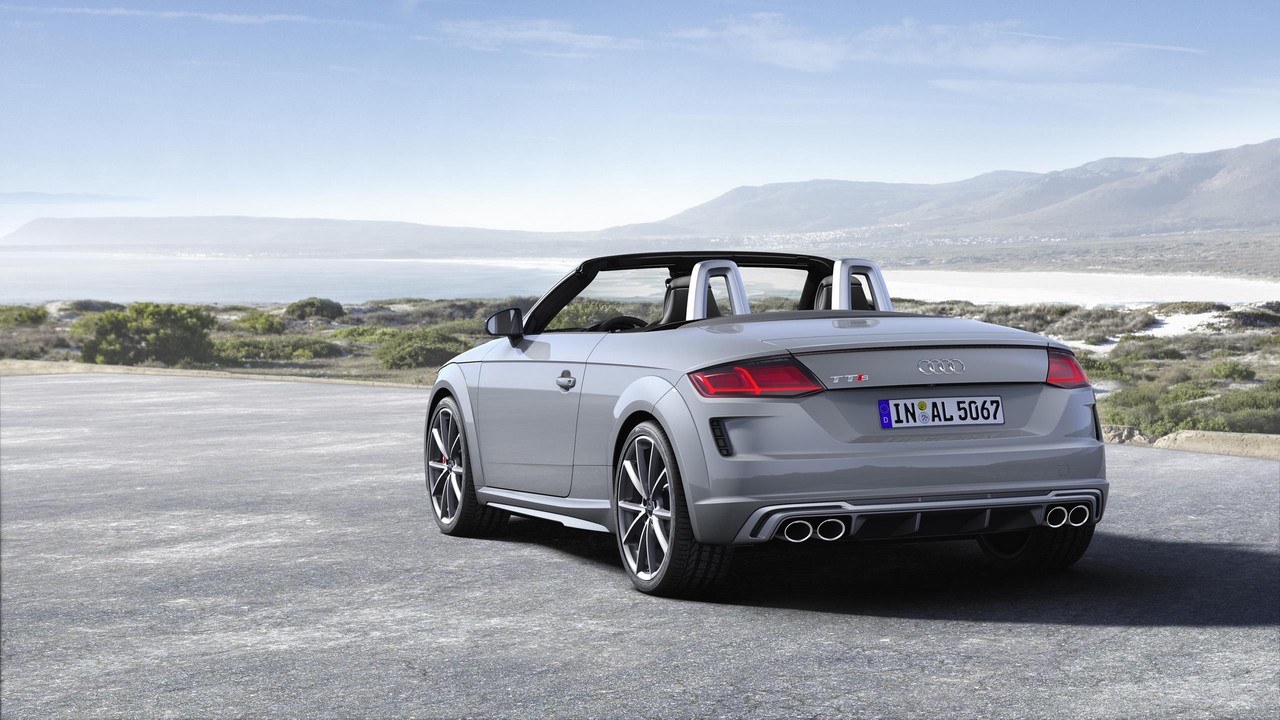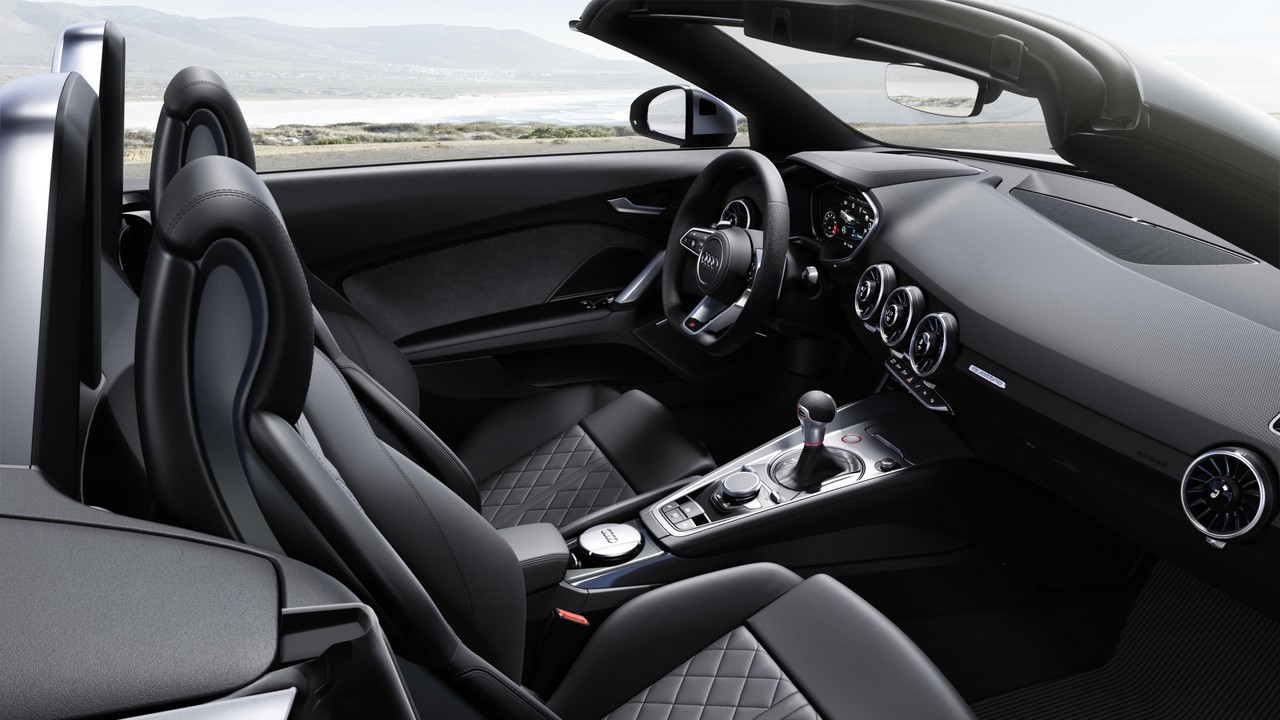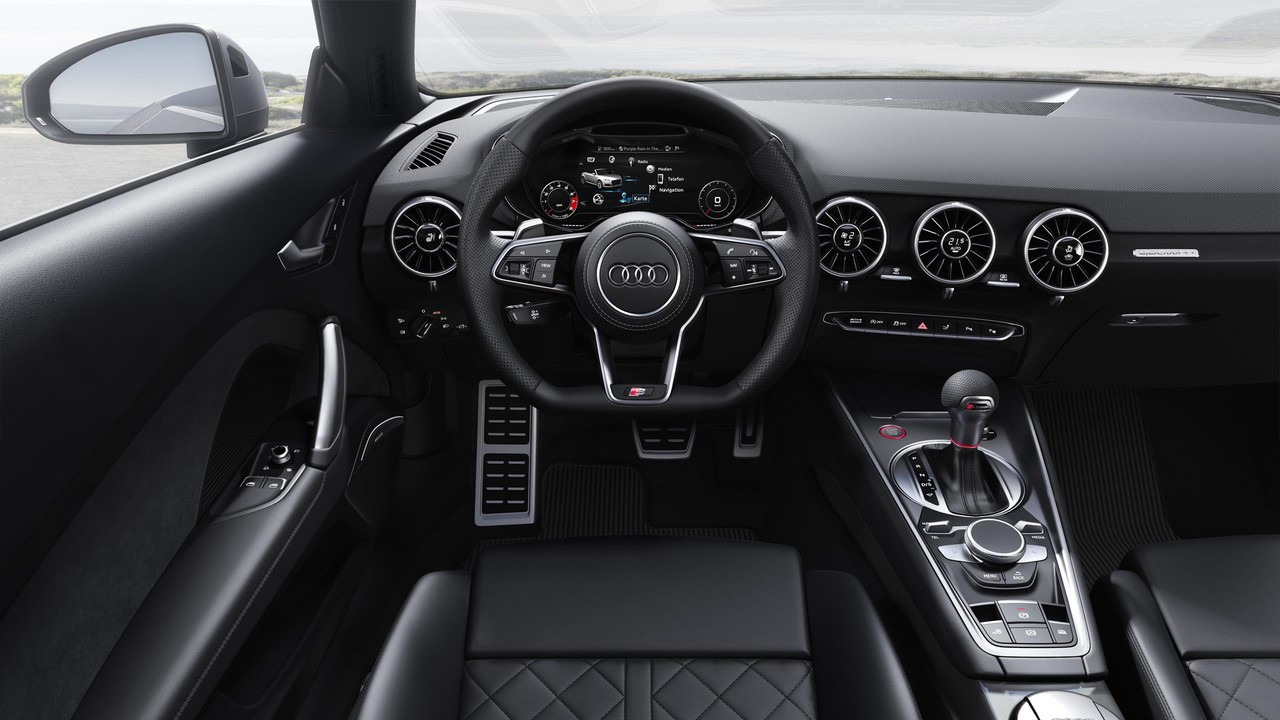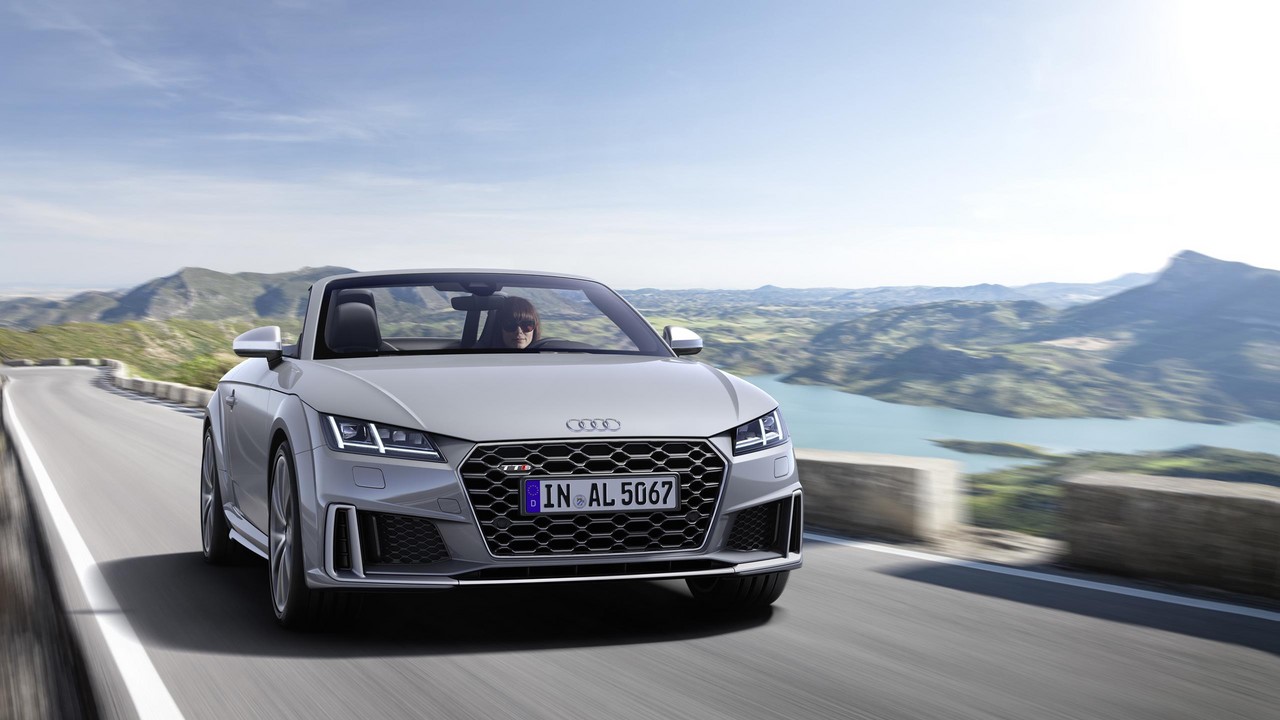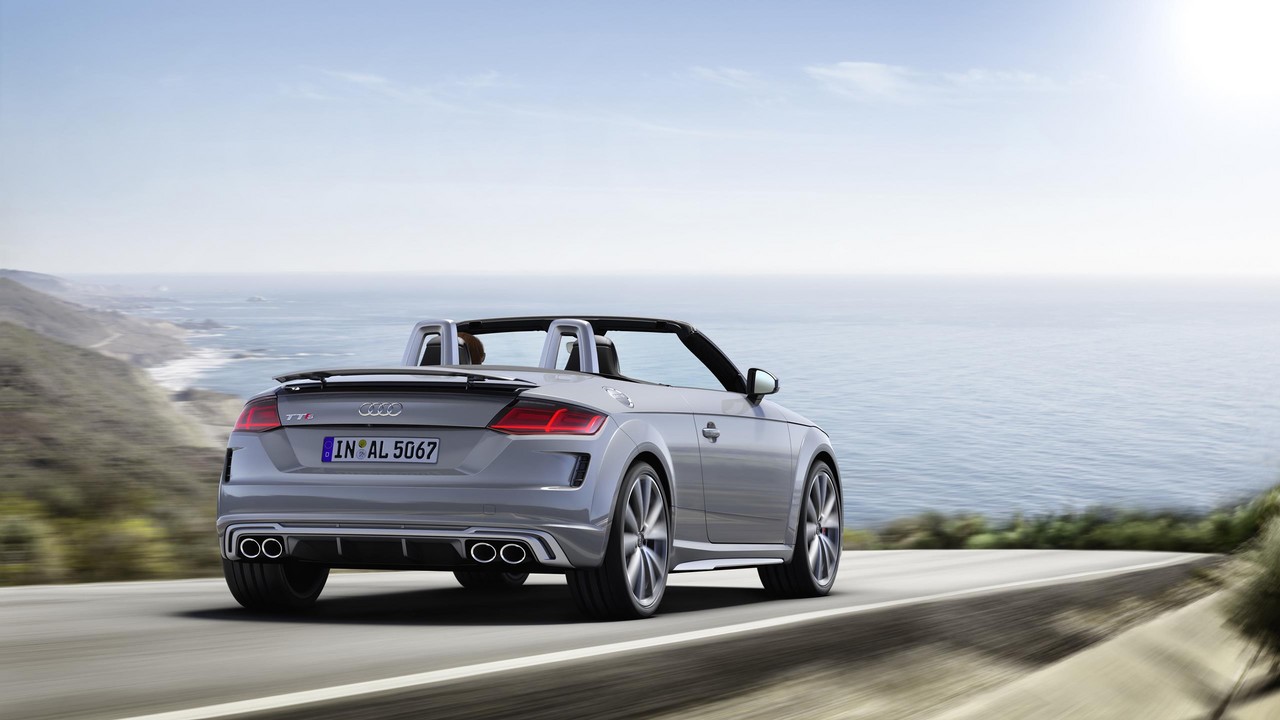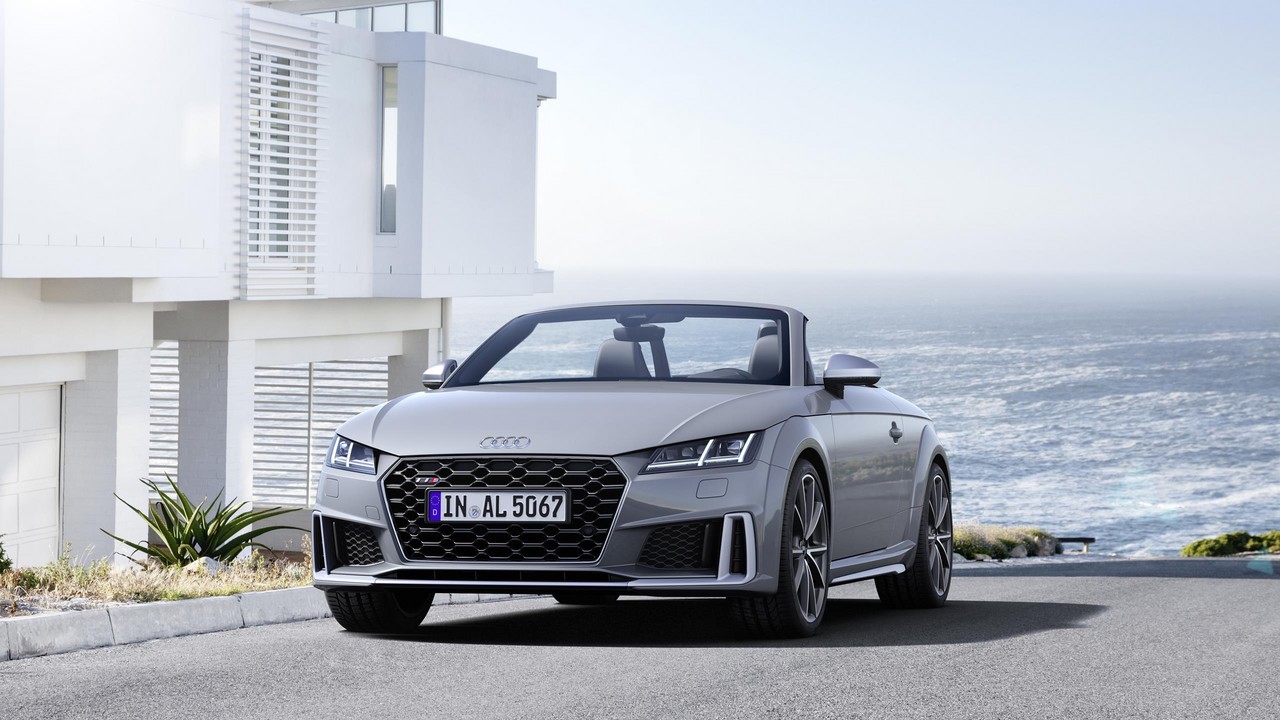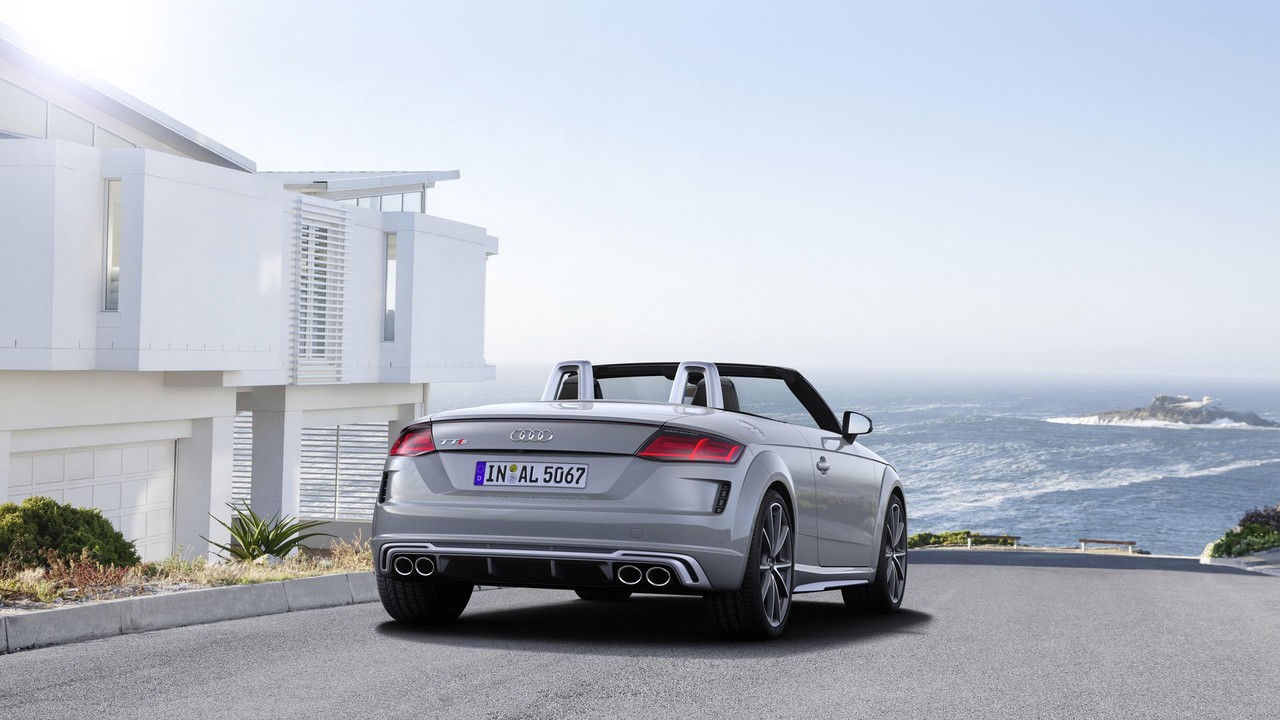
- Powerful 2.0-litre turbocharged petrol engine
- Impressive dynamics
- Accurate steering
- High standard of interior fit and finish
- Steering lacks feel
- Noise when travelling on coarse-chip roads
- Cramped rear seat
Review: Audi 8S.I TTS Roadster (2015-18)
Overview
Released in Australia in October 2015, the Audi 8S TTS Roadster was an all-wheel drive, two-seat convertible with a power-operated, soft-top roof. Manufactured in Gyor, Hungary, the Audi TTS Roadster was powered by a 2.0-litre turbocharged petrol engine that was mated to a six-speed double clutch transmission (DCT or Audi’s ‘S-Tronic’).
2.0 TFSI Engine
Compared to Audi’s standard 2.0 TFSI engine, changes for the TTS Roadster’s CJXG engine included pistons with stronger bolts, new piston rings and reinforced connecting rods, a larger turbocharger which provided maximum boost pressure of up to 1.2 bar, a high-performance intercooler that was integrated into the water circuit (to reduce the temperature of the compressed air) and a compression ratio of 9.3:1. Other features of the engine included:
- The use of indirect injection – to supplement FSI direct petrol injection – at part engine loads to reduce fuel consumption and particulate emissions. As such, FSI injection – which operated at pressures up to 200 bar – was used on start-up and at higher loads;
- An exhaust valve lift system which varied the stroke of the valves in two stages: the camshaft on the intake side could be adjusted steplessly through 30 degrees of crankshaft angle while 60 degrees of adjustment was available on the exhaust side;
- An exhaust manifold that was integrated into the cylinder head and bathed in coolant;
- A lightweight aluminium-silicon alloy cylinder head;
- Two balance shafts which rotated at twice the speed of the crankshaft to reduce vibrations; and,
- Audi’s ‘Start-Stop’ system which could shut down the engine when the vehicle was stationary to conserve fuel.
Although this engine produces peak power of 228 kW for international markets, the Australia-specific output for this engine is 210 kW.
The Audi 8S TTS Roadster could accelerate from rest to 100 km/h in 5.0 seconds and had an electronically-limited top speed of 250 km/h. Over the combined ADR 81/02 test cycle, fuel consumption for the 8S TTS Roadster was 6.9 litres per 100 km.
| Engine | Trans. | Peak power | Peak torque | |
|---|---|---|---|---|
| 2.0 TFSI AWD | 2.0-litre CJXG turbo petrol I4 | 6sp DCT | 210 kW at 5100-6200 rpm | 380 Nm at 1800-5200 rpm |
Haldex 5 all-wheel drive (‘quattro’)
The Audi 8S TTS Coupe had a fifth-generation Haldex all-wheel drive system which utilised an electronically controlled and hydraulically actuated multi-plate clutch that was located in front of the rear axle differential (at the end of the prop shaft). If there was a loss of front-wheel traction, or such a loss was anticipated by on-board sensors, the clutch would engage to transfer torque to the rear axle ‘in just a few milliseconds’ for a 50:50 front:rear torque split.
As a result of new software which determined the parameters for engagement of the multi-plate clutch, the all-wheel drive system had three selectable modes:
- Efficiency: for maximum fuel efficiency, the rear axle was decoupled such that the vehicle was front-wheel drive only. Nonetheless, all-wheel drive would still be activated before torque was required at all four wheels if a loss of traction was anticipated;
- Auto: the quattro system provideD a 90:10 front:rear torque split; and,
- Dynamic: the multi-plate clutch would engage earlier and to a higher degree.
Development
According to Audi, the body of the 8S TTS Roadster ‘represent[ed] a new evolution of the Audi Space Frame (ASF) based on the modular transverse matrix (MQB)’. As such, the 8S TT Roadster had:
- Ultra-high-strength, hot-shaped steel components reinforcing the front section and passenger compartment; and,
- Semi-finished aluminium in the form of cast nodes, extruded profiles and sheet metal for the passenger compartment, outer skin and attachment parts.
Compared to the Audi 8S TTS Coupe , the 8S TTS Roadster had a modified aluminium A-pillar which contained a second steel pillar with an internal solid steel tube. Other design features included internal steel ribbing for the aluminium sills and V-shaped steel struts to reinforce zones beneath the engine compartment, luggage compartment and to connect the axle carriers.
Soft-top roof
Tthe Audi 8S TTS Roadster’s electrically actuated fabric top – which had magnesium, aluminium, steel and plastic framework – was 3 kg lighter than its predecessor, and improved insulation reduced interior noise by up to 6 dB (depending on frequency). The soft-top was powered by two electric motors which enabled it to open and close in 10 seconds, and be operated at speeds of up to 50 km/h. Since the top folded into a Z shape on an aluminium tray, it did not encroach upon the 280 litre boot. For Australia, the Audi TTS Roadster had a power-operated wind deflector fitted as standard.
Dimensions
Compared to the Audi 8J TTS Roadster , the 8S TTS Roadster was 21 mm shorter (at 4177 mm), 10 mm narrower (1832 mm) and had a 37 mm longer wheelbase (2505 mm). Furthermore, the 8S TTS Roadster had a drag coefficient of 0.30 Cd.
Suspension
The Audi 8S TTS Roadster had MacPherson strut front suspension and independent, four-link rear suspension. As standard, the TTS Roadster was fitted with the third generation of Audi’s adaptive damper control system, ‘Audi magnetic ride’. With Audi magnetic ride, the dampers were filled with magnetorheological fluid and damper resistance could be varied by the application of a magnetic field to the fluid. Audi magnetic ride also enabled the driver to select from comfort, auto or dynamic settings.
Steering
The Audi 8S TTS Roadster had variable ratio, electromechanical steering. The TTS Roadster was also fitted ‘Audi drive select’ as standard so that the driver could adjust engine characteristics and steering assistance via comfort, auto, dynamic, efficiency and individual settings.
Safety equipment
Standard safety equipment for the Audi 8S TTS Roadster included dual front airbags, front side airbags with head/thorax protection, ABS, electronic brake force distribution, brake assist, electronic stability control, traction control and front seatbelts with load limiters and pretensioners.
As standard, the Audi TTS Roadster was also fitted with:
- Active lane assist: helped drivers remain in their lane by making slight steering corrections via the electromechanical steering if necessary; and,
- Attention Assist: monitored driver behaviour for signs of inattentiveness and issued a warning tone and visual signal if detected.
Features: Audi 8S TTS Roadster
Standard features for the Audi 8S TTS Roadster included 19-inch alloy wheels in a five-arm facet design, a 155 watt Audi sound system with nine speakers, two bass boxes and a five-channel amplifier, a CD/DVD player, digital radio tuner (DAB+), Bluetooth mobile phone connectivity and audio streaming, auxiliary inputs (3.5 mm, SDXC card readers and USB), voice recognition, 10GB flash memory, Audi’s MMI navigation plus system with live traffic updates, climate control air conditioning, ‘S’ front sport seats, power adjustable and heated front seats, Alcantara seat panels with leather bolsters, cruise control, LED headlights, LED daytime driving lights, a rear view camera, front and rear parking sensors, automatic headlights, rain-sensing wipers, a leather steering wheel with gearshift paddles, remote central locking with proximity key (i.e. keyless entry), power windows and mirrors, tilt and telescopic steering wheel adjustment, an auto-dimming rear view mirror, push-button start, a 12 volt power socket in the luggage compartment, tyre pressure monitoring, a tyre repair kit, trip computer and an immobiliser.
Inside, the 8S TTS Roadster featured Audi’s ‘virtual cockpit’ which utilised a 12.3-inch, high-resolution LCD within the driver’s instrument binnacle. The ‘virtual cockpit’ enabled the driver to select from two modes –
- Classic: the speedometer and rev counter were in the foreground; and,
- Infotainment: the virtual instruments were smaller to provide room for other functions such as the navigation map.
At the lower edge of the virtual cockpit, the displays for ambient temperature and time were permanently visible.
Specifications
- Specifications: Audi 8S TTS Coupe and TTS Roadster (October 2015)
- Specifications: Audi 8S TTS Coupe and TTS Roadster (December 2016)
Review: Audi 8S.II TTS Roadster (2019-on)
Overview
The Audi 8S.II TTS Roadster will be released in Australia in the second quarter of 2019. The 8S.II TTS Roadster will be powered by a more powerful 2.0 TFSI engine which is mated to a seven-speed double clutch transmission (previously six-speed). With this powertrain, the Audi 8S.II TTS Roadster can accelerate from rest to 100 km/h in 4.8 seconds.
Visually, the Audi 8S.II TTS Roadster can be identified by a new horizontal blade in its front bumper and, at the rear, a wider diffuser.
| Engine | Trans. | Peak power | Peak torque | |
|---|---|---|---|---|
| 2.0 TFSI AWD | 1984 cc DNU turbo petrol I4 | 7sp DCT | 225 kW at 5400-6500 rpm | 400 Nm at 2000-5300 rpm |
Features
Further information regarding features for the Audi 8S.II TTS Roadster will be available closer to launch.
Related links

